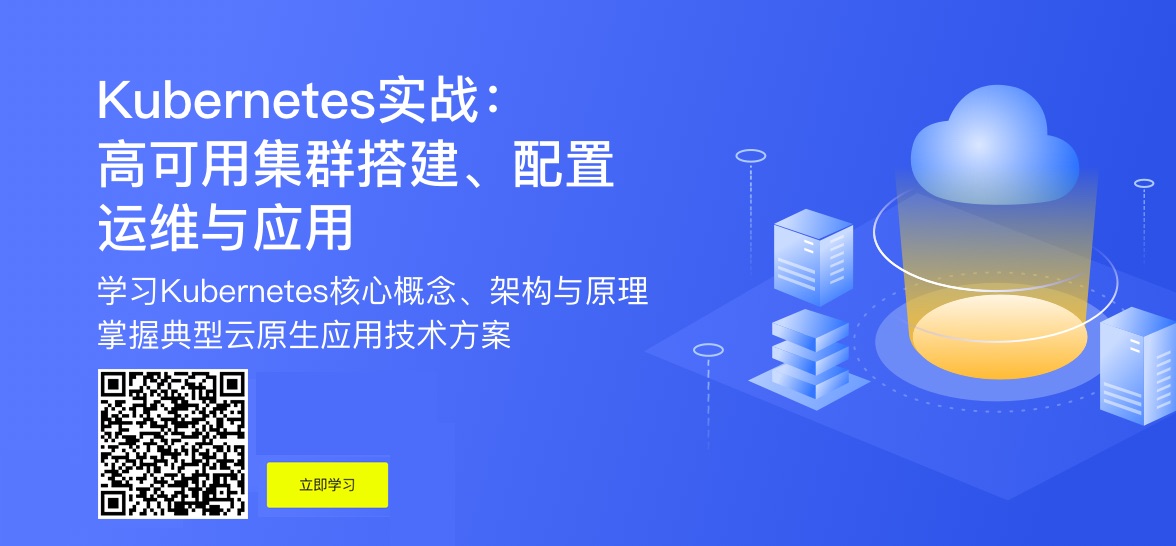Go GC如何检测内存对象中是否包含指针

本文永久链接 – https://tonybai.com/2022/02/21/how-gc-detect-pointer-in-mem-obj
众所周知,Go是带垃圾回收(GC)的编程语言,开发者通常不需要考虑对内存的管理,降低了心智负担。Go程序运行的时候,GC在背后默默辛劳地为开发者“擦屁股”:把无法reach到的内存对象定期地释放掉以备后续重用。
GC只关心指针,只要被扫描到的内存对象中有指针,它就会“顺藤摸瓜”,把该内存对象所在的“关系网”摸个门儿清,而那些被孤立在这张“网”之外的内存对象就是要被“清扫”的对象。
那么GC在扫描时如何判断某个内存对象中是否有指针呢?这篇文章我们就来说说这事儿!
内存对象中有指针与无指针的差别
在Gopher Academy Blog 2018年发表的一篇文章《Avoiding high GC overhead with large heaps》中作者曾用两个例子来对比了内存对象中有指针与无指针时GC的行为差别。我们摘录一下其中的这两个例子,第一个例子如下:
// demo1.go
func main() {
a := make([]*int, 1e9)
for i := 0; i < 10; i++ {
start := time.Now()
runtime.GC()
fmt.Printf("GC took %s\n", time.Since(start))
}
runtime.KeepAlive(a)
}
程序中调用runtime.KeepAlive函数用于保证在该函数调用点之前切片a不会被GC释放掉。
我们看到:demo1中声明了一个包含10亿个*int的切片变量a,然后调用runtime.GC函数手工触发GC过程,并度量每次GC的执行时间,我们看看这个程序的执行结果(virtualbox 虚拟机ubuntu 20.04/go 1.18beta2):
$ go run demo1.go
GC took 698.46522ms
GC took 325.315425ms
GC took 321.959991ms
GC took 326.775531ms
GC took 333.949713ms
GC took 332.350721ms
GC took 328.1664ms
GC took 329.905988ms
GC took 328.466344ms
GC took 330.327066ms
我们看到,每轮GC调用都相当耗时。我们再来看第二个例子:
// demo2.go
func main() {
a := make([]int, 1e9)
for i := 0; i < 10; i++ {
start := time.Now()
runtime.GC()
fmt.Printf("GC took %s\n", time.Since(start))
}
runtime.KeepAlive(a)
}
这个例子仅是将切片的元素类型由*int改为了int。我们运行一下这第二个例子:
$ go run demo2.go
GC took 3.486008ms
GC took 1.678019ms
GC took 1.726516ms
GC took 1.13208ms
GC took 1.900233ms
GC took 1.561631ms
GC took 1.899654ms
GC took 7.302686ms
GC took 131.371494ms
GC took 1.138688ms
在我们的实验环境中demo2中每轮GC的性能是demo1的300多倍!两个demo源码唯一的不同就是切片中的元素类型,demo1中的切片元素类型为int型指针。GC每次触发后都会全量扫描切片中存储的这10亿个指针,这就是demo1 GC函数执行时间很长的原因。而demo2中的切片元素类型为int,从demo2的运行结果来看,GC根本没有搭理demo2中的a,这也是demo2 GC函数执行时间较短的原因(我测试了一下:在我的环境中,即便不声明切片a,只是执行10次runtime.GC函数,该函数的平均执行时间也在1ms左右)。
通过以上GC行为差异,我们知道GC可以通过切片a的类型知晓其元素是否包含指针,进而决定是否对其进行进一步扫描。下面我们就来看看GC是如何检测到某一个内存对象中包含指针的。
运行时类型信息(rtype)
Go是静态语言,每个变量都有自己的归属的类型,当变量被在堆上分配时,堆上的内存对象也就有了自己归属的类型。Go编译器在编译阶段就为Go应用中的每种类型建立了对应的类型信息,这些信息体现在runtime._rtype结构体中,Go reflect包的rtype结构体等价于runtime._rtype:
// $GOROOT/src/reflect/type.go
// rtype is the common implementation of most values.
// It is embedded in other struct types.
//
// rtype must be kept in sync with ../runtime/type.go:/^type._type.
type rtype struct {
size uintptr
ptrdata uintptr // number of bytes in the type that can contain pointers
hash uint32 // hash of type; avoids computation in hash tables
tflag tflag // extra type information flags
align uint8 // alignment of variable with this type
fieldAlign uint8 // alignment of struct field with this type
kind uint8 // enumeration for C
// function for comparing objects of this type
// (ptr to object A, ptr to object B) -> ==?
equal func(unsafe.Pointer, unsafe.Pointer) bool
gcdata *byte // garbage collection data
str nameOff // string form
ptrToThis typeOff // type for pointer to this type, may be zero
}
在这个结构体类型中的gcdata字段是为GC服务的,我们看看它究竟是什么!怎么看呢?由于reflect.rtype类型是非导出类型,我们需要对本地的Go语言源码做一些hack,我在reflect包的type.go文件中rtype结构体的定义之前添加一行代码:
type Rtype = rtype
我们用Go 1.9版本引入的类型别名(type alias)机制将rtype导出,这样我们就可以在标准库外面使用reflect.Rtype了。
有童鞋可能会问:改了本地Go标准库源码后,Go编译器就会使用最新源码来编译我们的Go示例程序么?Go 1.18之前的版本都不会!大家可以自行试验一下,也可以通过《Go语言精进之路vol1》第16条“理解包导入”一章了解有关于Go编译器构建过程的详尽描述。
下面我们来获取一个切片的类型对应的rtype,看看其中的gcdata究竟是啥?
// demo4.go
package main
import (
"fmt"
"reflect"
"unsafe"
)
type tflag uint8
type nameOff int32 // offset to a name
type typeOff int32 // offset to an *rtype
type rtype struct {
size uintptr
ptrdata uintptr // number of bytes in the type that can contain pointers
hash uint32 // hash of type; avoids computation in hash tables
tflag tflag // extra type information flags
align uint8 // alignment of variable with this type
fieldAlign uint8 // alignment of struct field with this type
kind uint8 // enumeration for C
// function for comparing objects of this type
// (ptr to object A, ptr to object B) -> ==?
equal func(unsafe.Pointer, unsafe.Pointer) bool
gcdata *byte // garbage collection data
str nameOff // string form
ptrToThis typeOff // type for pointer to this type, may be zero
}
func bar() []*int {
t := make([]*int, 8 )
return t
}
func main() {
t := bar()
v := reflect.TypeOf(t)
rtyp, ok := v.(*reflect.Rtype)
if !ok {
println("error")
return
}
r := (*rtype)(unsafe.Pointer(rtyp))
fmt.Printf("%#v\n", *r)
fmt.Printf("*gcdata = %d\n", *(r.gcdata))
}
bar函数返回一个堆上分配的切片实例t,我们通过reflect.TypeOf获取t的类型信息,通过类型断言我们得到该类型的rtype信息:rtyp,不过gcdata也是非导出字段并且是一个指针,我们要想对其解引用,我们这里又在本地定义了一个本地rtype类型,用于输出gcdata指向的内存的值。
运行这个示例:
$go run demo4.go
main.rtype{size:0x18, ptrdata:0x8, hash:0xaad95941, tflag:0x2, align:0x8, fieldAlign:0x8, kind:0x17, equal:(func(unsafe.Pointer, unsafe.Pointer) bool)(nil), gcdata:(*uint8)(0x10c1b58), str:3526, ptrToThis:0}
*gcdata = 1
我们看到gcdata指向的一个字节的内存的值为1(二进制为0b00000001)。好了,不卖关子了!gcdata所指的这个字节每一bit上的值代表一个8字节的内存块是否包含指针。这样的一个字节就可以标识在一个64字节的内存块中,每个8字节的内存单元是否包含指针。如果类型长度超过64字节,那么用于表示指针地图的gcdata指向的有效字节个数也不止1个字节。
读过我的“Go语言第一课”专栏的童鞋都知道,切片类型在runtime层表示为下面结构:
// $GOROOT/src/runtime/slice.go
type slice struct {
array unsafe.Pointer
len int
cap int
}
这里切片类型结构内存对齐后的size为24,小于64个字节,因此Go用一个字节就可以表示切片类型的指针地图。而*gcdata=1,即最低位上的bit为1,表示切片类型的第一个8字节中存储着一个指针。配合下面的示意图理解起来更easy一些:

我们也可以进一步查看切片中各元素是否包含指针,由于该切片的元素就是指针类型,所以每个元素的rtype.gcdata指向的bitmap的值都应该是1,我们来验证一下:
//demo5.go
... ...
func main() {
t := bar()
v := reflect.ValueOf(t)
for i := 0; i < len(t); i++ {
v1 := v.Index(i)
vtyp := v1.Type()
rtyp, ok := vtyp.(*reflect.Rtype)
if !ok {
println("error")
return
}
r := (*rtype)(unsafe.Pointer(rtyp))
fmt.Printf("%#v\n", *r)
fmt.Printf("*gcdata = %d\n", *(r.gcdata))
}
}
这个例子输出了每个切片元素的bitmap,结果如下:
$go run demo5.go
gomain.rtype{size:0x8, ptrdata:0x8, hash:0x2522ebe7, tflag:0x8, align:0x8, fieldAlign:0x8, kind:0x36, equal:(func(unsafe.Pointer, unsafe.Pointer) bool)(0x1002c40), gcdata:(*uint8)(0x10c1be0), str:566, ptrToThis:0}
*gcdata = 1
main.rtype{size:0x8, ptrdata:0x8, hash:0x2522ebe7, tflag:0x8, align:0x8, fieldAlign:0x8, kind:0x36, equal:(func(unsafe.Pointer, unsafe.Pointer) bool)(0x1002c40), gcdata:(*uint8)(0x10c1be0), str:566, ptrToThis:0}
*gcdata = 1
main.rtype{size:0x8, ptrdata:0x8, hash:0x2522ebe7, tflag:0x8, align:0x8, fieldAlign:0x8, kind:0x36, equal:(func(unsafe.Pointer, unsafe.Pointer) bool)(0x1002c40), gcdata:(*uint8)(0x10c1be0), str:566, ptrToThis:0}
*gcdata = 1
main.rtype{size:0x8, ptrdata:0x8, hash:0x2522ebe7, tflag:0x8, align:0x8, fieldAlign:0x8, kind:0x36, equal:(func(unsafe.Pointer, unsafe.Pointer) bool)(0x1002c40), gcdata:(*uint8)(0x10c1be0), str:566, ptrToThis:0}
*gcdata = 1
main.rtype{size:0x8, ptrdata:0x8, hash:0x2522ebe7, tflag:0x8, align:0x8, fieldAlign:0x8, kind:0x36, equal:(func(unsafe.Pointer, unsafe.Pointer) bool)(0x1002c40), gcdata:(*uint8)(0x10c1be0), str:566, ptrToThis:0}
*gcdata = 1
main.rtype{size:0x8, ptrdata:0x8, hash:0x2522ebe7, tflag:0x8, align:0x8, fieldAlign:0x8, kind:0x36, equal:(func(unsafe.Pointer, unsafe.Pointer) bool)(0x1002c40), gcdata:(*uint8)(0x10c1be0), str:566, ptrToThis:0}
*gcdata = 1
main.rtype{size:0x8, ptrdata:0x8, hash:0x2522ebe7, tflag:0x8, align:0x8, fieldAlign:0x8, kind:0x36, equal:(func(unsafe.Pointer, unsafe.Pointer) bool)(0x1002c40), gcdata:(*uint8)(0x10c1be0), str:566, ptrToThis:0}
*gcdata = 1
main.rtype{size:0x8, ptrdata:0x8, hash:0x2522ebe7, tflag:0x8, align:0x8, fieldAlign:0x8, kind:0x36, equal:(func(unsafe.Pointer, unsafe.Pointer) bool)(0x1002c40), gcdata:(*uint8)(0x10c1be0), str:566, ptrToThis:0}
*gcdata = 1
输出结果与预期相符。
我们再来看一个例子,一个用单字节bitmap无法表示的类型:
// demo6.go
... ...
type S struct { // 起始地址
a uint8 // 0
b uintptr // 8
p1 *uint8 // 16
c [3]uint64 // 24
d uint32 // 48
p2 *uint64 // 56
p3 *uint8 // 64
e uint32 // 72
p4 *uint64 // 80
}
func foo() *S {
t := new(S)
return t
}
func main() {
t := foo()
println(unsafe.Sizeof(*t)) // 88
typ := reflect.TypeOf(t)
rtyp, ok := typ.Elem().(*reflect.Rtype)
if !ok {
println("error")
return
}
fmt.Printf("%#v\n", *rtyp)
r := (*rtype)(unsafe.Pointer(rtyp))
fmt.Printf("%#v\n", *r)
fmt.Printf("%d\n", *(r.gcdata))
gcdata1 := (*byte)(unsafe.Pointer(uintptr(unsafe.Pointer(r.gcdata)) + 1))
fmt.Printf("%d\n", *gcdata1)
}
在这个例子中,我们定义了一个很大的结构体类型S,其size为88,用一个字节无法表示出其bitmap,于是Go使用了两个字节,我们输出这两个字节的bitmap:
$go run demo6.go
88
reflect.rtype{size:0x58, ptrdata:0x58, hash:0xcdb468b2, tflag:0x7, align:0x8, fieldAlign:0x8, kind:0x19, equal:(func(unsafe.Pointer, unsafe.Pointer) bool)(0x108aea0), gcdata:(*uint8)(0x10c135b), str:3593, ptrToThis:19168}
main.rtype{size:0x58, ptrdata:0x58, hash:0xcdb468b2, tflag:0x7, align:0x8, fieldAlign:0x8, kind:0x19, equal:(func(unsafe.Pointer, unsafe.Pointer) bool)(0x108aea0), gcdata:(*uint8)(0x10c135b), str:3593, ptrToThis:19168}
132
5
我们将结果转换成一幅示意图,如下图:

理解上面这个结构体size以及各字段起始地址的前提是理解内存对齐,这个大家可以在我的博客内搜索以前撰写的有关内存对齐的相关内容,当然也可以参考我在专栏第17讲讲解结构体类型时对Go内存对齐的系统讲解。




我爱发短信:企业级短信平台定制开发专家 https://tonybai.com/。smspush : 可部署在企业内部的定制化短信平台,三网覆盖,不惧大并发接入,可定制扩展; 短信内容你来定,不再受约束, 接口丰富,支持长短信,签名可选。2020年4月8日,中国三大电信运营商联合发布《5G消息白皮书》,51短信平台也会全新升级到“51商用消息平台”,全面支持5G RCS消息。
著名云主机服务厂商DigitalOcean发布最新的主机计划,入门级Droplet配置升级为:1 core CPU、1G内存、25G高速SSD,价格5$/月。有使用DigitalOcean需求的朋友,可以打开这个链接地址:https://m.do.co/c/bff6eed92687 开启你的DO主机之路。
Gopher Daily(Gopher每日新闻)归档仓库 – https://github.com/bigwhite/gopherdaily
我的联系方式:
- 微博:https://weibo.com/bigwhite20xx
- 微信公众号:iamtonybai
- 博客:tonybai.com
- github: https://github.com/bigwhite
- “Gopher部落”知识星球:https://public.zsxq.com/groups/51284458844544

商务合作方式:撰稿、出书、培训、在线课程、合伙创业、咨询、广告合作。












评论